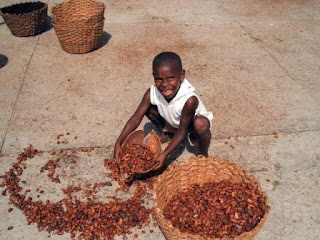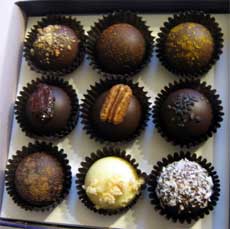The Story of Kosambi Monks (Verse 6)
While residing at the Jetavana monastery in Savatthi, the Buddha uttered Verse (6) of this book, with reference to the bhikkhus of Kosambi.
The bhikkhus of Kosambi had formed into two groups. One group followed the master of Vinaya and the other followed the teacher of the Dhamma and they were often quarrelling among themselves. Even the Buddha could not stop them from quarrelling; so he left them and spent the vassa, residence period of the rains, all alone in Rakkhita Grove near Palileyyaka forest. There, the elephant Palileyya waited upon the Buddha.
This picture is of one episode in the Buddha's life, when he went to spend a rains retreat by himself, with no monks or lay people in attendance. The forest that he stayed in that year was a very big forest, the home of a big tusker elephant known as palilayaka, and the forest was named after that elephant. In Thailand it is called the "palelai forest."
The reason that the Buddha spent the rains retreat on his own that year is that he was tired of the monks of Kosambi who had split into two groups and were not in harmony, refusing to perform the duties of the order (sanghakamma) together. When the Buddha heard of this he went to see them to try to put a stop to their discord, but both sides refused to listen to him. That is why the Buddha went to stay on his own.
Due to the Buddha's great powers and kindness, the elephant known as palilayaka attended on him. In the morning he would bring fruits from the forest to offer to the Buddha and in the evening boil water for him by rolling rocks heated in a fire into a pool of water.
A monkey saw the elephant serving the Buddha and brought a honeycomb to offer. The Buddha received it but did not eat the honey, so the monkey took back the honeycomb and considered it. Seeing bee larvae inside, he took them all out and then took only pure honey to offer. This time the Buddha accepted it and ate the honey. The monkey, watching the Buddha from atop a tree, was overjoyed. Jumping about with excitement, he fell from the tree and was run through and killed by a sharp tree stump.
After the rains retreat the monks who had split into two groups agreed to make up their differences because the local lay people were not making any offerings to them. The monks sent a representative to see the Buddha and invite him to go back to the city. The elephant palilayaka was heartbroken to see the Buddha go, and followed him out of the forest, and even made as if he would follow the Buddha into the city. The Buddha turned to him and said, "Palilayaka. This is the limits of your territory. From here on is the territory of man, which are a great danger to animals such as you. You cannot come with me!"
Palilayaka the elephant stood and roared in grief, but did not dare follow the Buddha.
As soon as the Buddha was out of sight, his heart broke and he died right there. The texts state that the elephant and the monkey, after dying at that time, were reborn as devas in the Tavatimsa heaven.
The lay disciples of Kosambi, on learning the reason for the departure of the Buddha, refused to make offerings to the remaining bhikkhus. This made them realize their mistake and reconciliation took place among themselves. Still, the lay disciples would not treat them as respectfully as before, until they owned up their fault to the Buddha. But the Buddha was away and it was in the middle of the vassa; so the bhikkhus of Kosambi spent the vassa in misery and hardship.
At the end of the vassa, the Venerable Ananda and five hundred bhikkhus approached the Buddha and gave the message from Annathapindika and other lay disciples imploring him to return. In due course the Buddha returned to the Jetavana monastery in Savatthi. The bhikkhus followed him there, fell down at his feet, and owned up their fault. The Buddha rebuked them for disobeying him. He told them to remember that they must all die some day and therefore, they must stop their quarrels and must not act as if they would never die.
**************
While residing at the Jetavana monastery in Savatthi, the Buddha uttered Verse (6) of this book, with reference to the bhikkhus of Kosambi.
The bhikkhus of Kosambi had formed into two groups. One group followed the master of Vinaya and the other followed the teacher of the Dhamma and they were often quarrelling among themselves. Even the Buddha could not stop them from quarrelling; so he left them and spent the vassa, residence period of the rains, all alone in Rakkhita Grove near Palileyyaka forest. There, the elephant Palileyya waited upon the Buddha.
This picture is of one episode in the Buddha's life, when he went to spend a rains retreat by himself, with no monks or lay people in attendance. The forest that he stayed in that year was a very big forest, the home of a big tusker elephant known as palilayaka, and the forest was named after that elephant. In Thailand it is called the "palelai forest."
The reason that the Buddha spent the rains retreat on his own that year is that he was tired of the monks of Kosambi who had split into two groups and were not in harmony, refusing to perform the duties of the order (sanghakamma) together. When the Buddha heard of this he went to see them to try to put a stop to their discord, but both sides refused to listen to him. That is why the Buddha went to stay on his own.
Due to the Buddha's great powers and kindness, the elephant known as palilayaka attended on him. In the morning he would bring fruits from the forest to offer to the Buddha and in the evening boil water for him by rolling rocks heated in a fire into a pool of water.
A monkey saw the elephant serving the Buddha and brought a honeycomb to offer. The Buddha received it but did not eat the honey, so the monkey took back the honeycomb and considered it. Seeing bee larvae inside, he took them all out and then took only pure honey to offer. This time the Buddha accepted it and ate the honey. The monkey, watching the Buddha from atop a tree, was overjoyed. Jumping about with excitement, he fell from the tree and was run through and killed by a sharp tree stump.
After the rains retreat the monks who had split into two groups agreed to make up their differences because the local lay people were not making any offerings to them. The monks sent a representative to see the Buddha and invite him to go back to the city. The elephant palilayaka was heartbroken to see the Buddha go, and followed him out of the forest, and even made as if he would follow the Buddha into the city. The Buddha turned to him and said, "Palilayaka. This is the limits of your territory. From here on is the territory of man, which are a great danger to animals such as you. You cannot come with me!"
Palilayaka the elephant stood and roared in grief, but did not dare follow the Buddha.
As soon as the Buddha was out of sight, his heart broke and he died right there. The texts state that the elephant and the monkey, after dying at that time, were reborn as devas in the Tavatimsa heaven.
The lay disciples of Kosambi, on learning the reason for the departure of the Buddha, refused to make offerings to the remaining bhikkhus. This made them realize their mistake and reconciliation took place among themselves. Still, the lay disciples would not treat them as respectfully as before, until they owned up their fault to the Buddha. But the Buddha was away and it was in the middle of the vassa; so the bhikkhus of Kosambi spent the vassa in misery and hardship.
 |
| Annathapindika |
Then the Buddha spoke in verse as follows:
| Verse 6: People, other than the wise, do not realize, "We in this world must all die," (and not realizing it continue their quarrels). The wise realize it and thereby their quarrels cease. |
**************
Most of us are not willing to face the reality of impermanence and death. It is because we forget this fact that our lives are transitory, that we quarrel with each other, as if we are going to live for ever. But, if we face the fact of death, our quarrels will come to an end. We will then realize the folly of fighting when we ourselves are doomed to die. Excited by emotions our thought being clouded, we cannot see the truth about life. When we see the truth, however, our thoughts become free of emotions.
















 1. Nestlé
1. Nestlé







